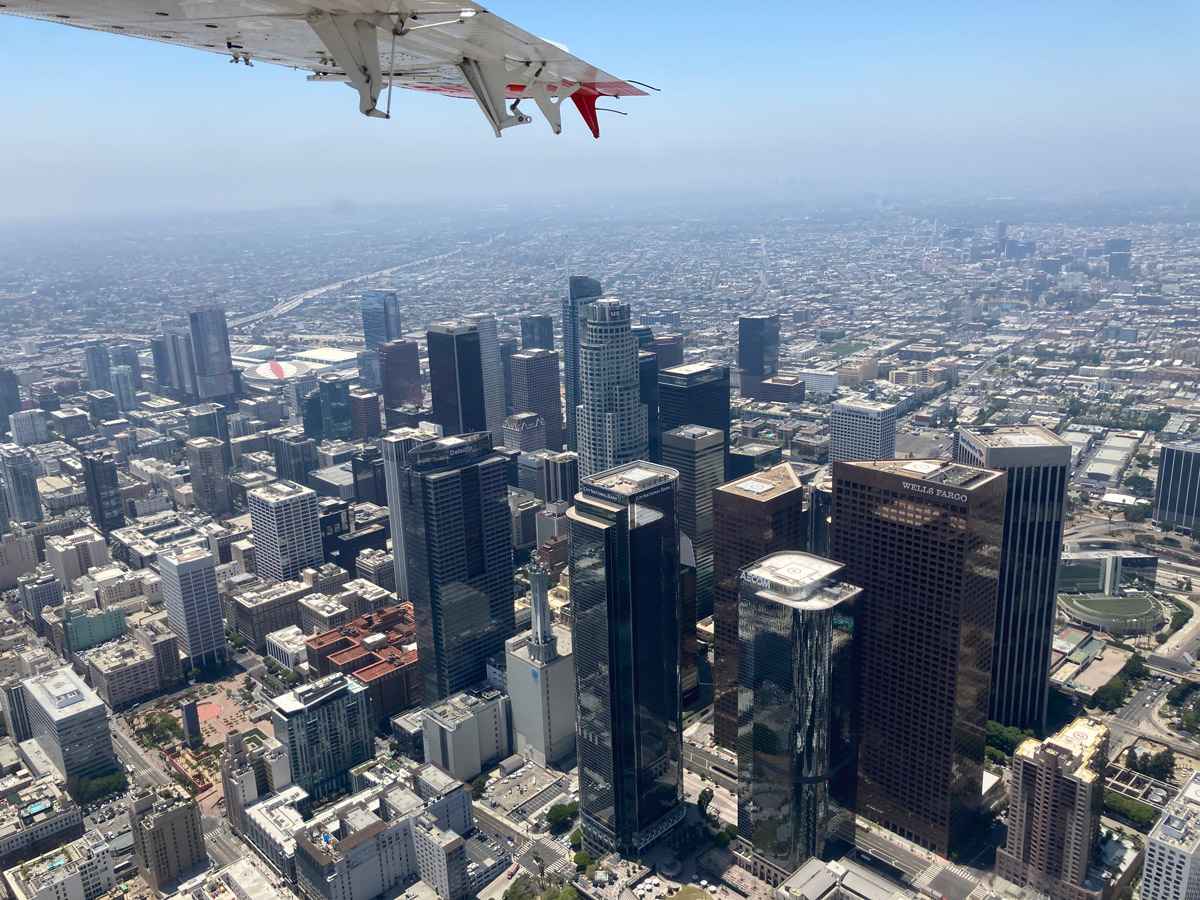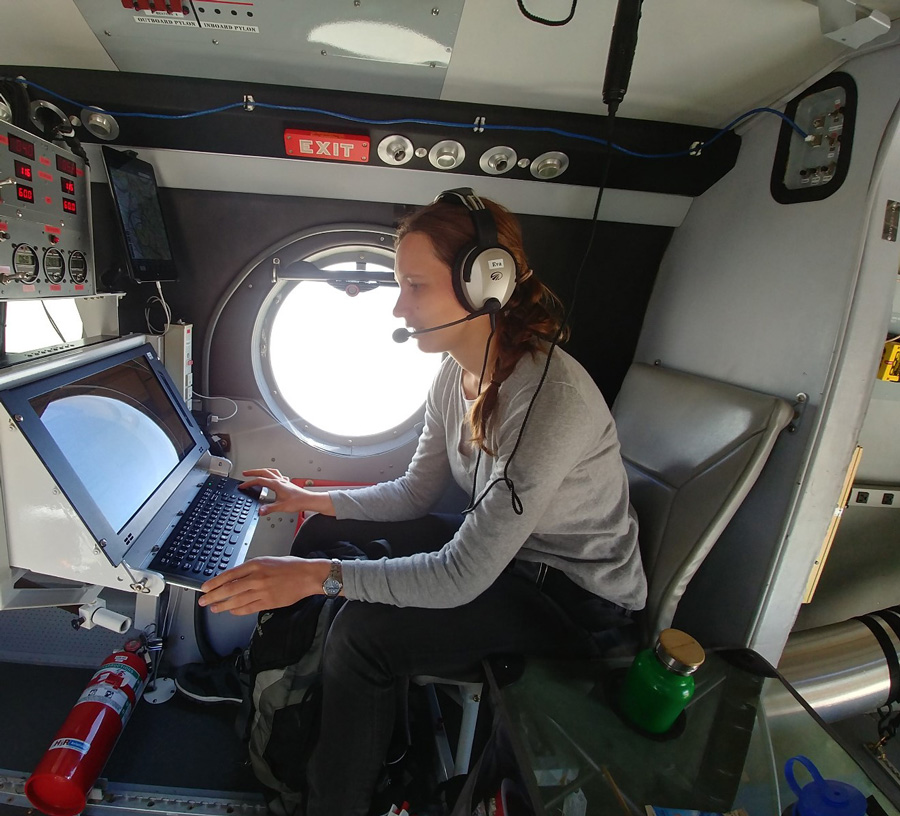
Skyscrapers in Downtown Los Angeles as photographed from an airplane during the research campaign. Photo courtesy of Eva Pfannerstill.
The skies above Los Angeles hold a surprising truth about the region’s air pollutants: biogenic sources like trees and other plants emit volatile organic compounds that react with anthropogenic pollutants, leading to formation of summertime air pollution in the region.
In a groundbreaking effort to directly measure the emission of volatile organic compounds (VOCs) above the city, UC Berkeley researchers Eva Pfannerstill, Allen Goldstein, and their colleagues found that approximately 60 percent of these pollution-forming compounds are linked to reactions associated with growing urban plants. The study, which was published today in Science, also details a significant temperature dependence of some human-driven VOC emissions—an effect not accounted for in the current emission inventories.
"It is well known that volatile organic compounds emissions by plants are temperature dependent,” said Pfannerstill, a former postdoctoral researcher in Goldstein’s lab and the study’s lead author. “These compounds are highly reactive and therefore efficiently react in the atmosphere."
Ambient air pollution is a major global health risk and is responsible for an estimated 4.2 million premature deaths annually. After VOCs are emitted into the atmosphere, they react with anthropogenic pollutants such as nitrogen oxides to produce secondary pollutants like tropospheric ozone and secondary organic aerosols (SOA), a dominant contributor to fine particulate matter (PM2.5). While progress has been made to reduce the VOC emissions from cars, trucks, and other anthropogenic sources, the authors note that in the Los Angeles region concentrations of ozone and PM2.5 have plateaued since 2010.

Pfannerstill, the study's lead author, sits at the aircraft's “science station” where she is able to control instrumentation for trace gas measurements.
To better understand the sources of VOC emissions, the authors mounted advanced mass spectrometry equipment in a plane and collected measurements while flying around Los Angeles. Around 60 percent of the potential to form ozone and SOA from the more than 400 VOCs they measured was due to terpenoids, which are mostly emitted by plants.
Goldstein, a professor in the Departments of Environmental Science, Policy, and Management and Civil and Environmental Engineering, said their findings highlight the unique challenge regulators face when crafting air quality controls. “Since VOC emissions from urban plants are so important and not controllable, we need to focus more on reducing emissions of the chemicals they react with from vehicles and other fossil fuel related sources that lead to high concentrations of smog on hot days,” he said.
As the climate continues to change, leading to an increase in the number of hot days, understanding how temperature affects VOC emissions and SOA formation becomes increasingly crucial. These findings will be essential for developing effective regulation strategies to maintain air quality in urban areas.
Read the full study online in Science, as well as a related perspective article. You can also hear Pfannerstill discuss the research and their findings on the Science podcast (her comments begin at 17:40).
